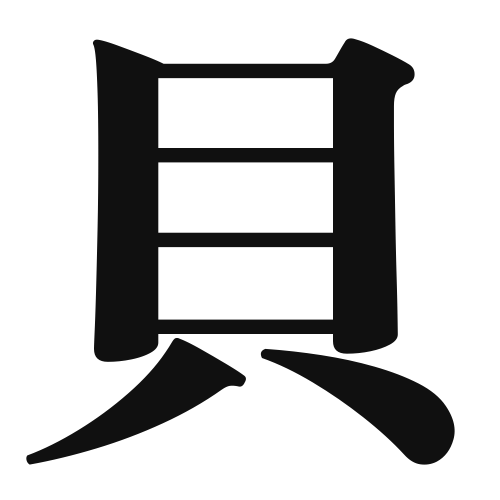1. Overview of Meaning
The kanji “貝” (pronounced “kai”) primarily means “shell” or “shellfish.” It represents various types of mollusks and is often associated with the sea and marine life.
2. Formation and Radical
Formation of the Kanji: The kanji “貝” is a pictogram that originally depicted a shell. It belongs to the category of pictographs, which are characters that visually represent the objects they denote.
Radical: The radical for “貝” is also “貝,” which is used in other kanji related to money and valuables, reflecting the historical significance of shells as currency in ancient times.
3. Examples of Usage
Common Words and Phrases: Some frequently used words that include “貝” are:
- 貝殻 (かいがら, kaigara) – shell
- 貝類 (ばいるい, bairui) – shellfish
Example Sentences in Daily Conversation:
- 海で貝を拾いました。 (うみでかいをひろいました。) – I picked up shells at the beach.
- 貝類は栄養が豊富です。 (ばいるいはえいようがほうふです。) – Shellfish are rich in nutrients.
4. Synonyms and Antonyms
Similar Kanji: A similar kanji is “貨” (か, ka), which means “goods” or “currency.” While both relate to value, “貝” specifically refers to shells, whereas “貨” refers to items of trade.
Antonyms: An antonym could be “石” (いし, ishi), meaning “stone.” While “貝” represents something soft and organic, “石” represents something hard and inorganic.
5. Cultural and Historical Background
Relation to Japanese Culture: In Japan, shells have historically been used as currency, especially in ancient times. This practice is reflected in the kanji’s meaning and usage.
Proverbs and Idioms: One common idiom is “貝の中に宝がある” (かいのなかにたからがある), which means “there is a treasure inside the shell,” symbolizing that valuable things can be found in unexpected places.
